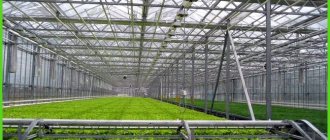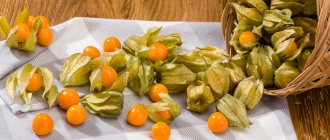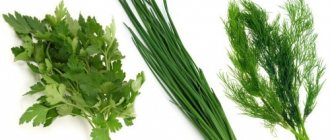Many people know iceberg lettuce, which is delicious and versatile in preparing various dishes. In this article we will look at the basic rules for planting, caring for and protecting this crop, so that even a novice gardener can get a good harvest.
iceberg lettuce
Regular consumption of Iceberg lettuce helps improve blood composition and reduce salts in the body
Iceberg salad is an extremely tasty and healthy vegetable
What is iceberg lettuce and what does it look like?
Iceberg lettuce is also known as Ice. We owe the origin of this delicious garden vegetable to the Americans from California. In the 20s of the 20th century, local breeders developed an unusually tasty and aromatic lettuce, rolled into a head of cabbage with delicate crispy leaves.
Iceberg lettuce looks like white cabbage
The salad quickly gained popularity among the population. For better transportation and storage of lettuce heads, an original method was invented: covering the salad with pieces of ice. After this, the beautiful name of the vegetable arose - Iceberg lettuce or “ice mountain”.
Externally, the vegetable crop is similar to the elastic forks of white cabbage. Proper agricultural technology and care allow you to grow heads of lettuce weighing from 200-700 g or more. The light green, succulent leaves are flavorful and crunchy when bitten.
Ice salad is good for the body
Iceberg lettuce: benefits and harms, composition
- Iceberg lettuce is the leader among all types of vegetable head salads in terms of vitamins, minerals and fiber content
- The leaves are rich in ascorbic acid, which supports our immunity and vascular elasticity.
- Vitamin K, contained in heads of lettuce, is involved in blood clotting processes
- Vitamin A has a positive effect on vision, skin and hair
- A large amount of potassium (141 mg per 100 g of salad) - good for the functioning of the heart muscle
- A huge amount of fiber promotes good functioning of the gastrointestinal tract, adsorption of toxins and wastes, and increased metabolism
- Lettuce leaves contain a lot of water. The vegetable contains absolutely no cholesterol and is suitable for dietary nutrition for all types of obesity
- Iceberg lettuce is rich in folic acid, which is necessary for hematopoiesis, increasing hemoglobin, and also for normalizing the functioning of the nervous system.
- Lactucin is a useful component of the milky juice of lettuce, giving it a piquant bitterness. The substance is very necessary for the functioning of the gastrointestinal tract and nervous system. Lactucin normalizes sleep, has a beneficial effect on heart function, lowers blood pressure, maintains vascular tone
IMPORTANT: Ice salad is useful for pregnant and lactating women. Children can take the “green vitamin” from 2 years of age. Salad leaves are also useful for older people suffering from cardiovascular diseases, diabetes, and gastrointestinal problems.
A small percentage of people have an individual intolerance to ice salad. This circumstance should be taken into account by pregnant and breastfeeding women. Salad should be introduced into children’s diets with caution.
Useful properties of Iceberg lettuce, video
Green smoothie with ice salad
Useful properties of the ingredient
Rich vitamin and nutrient composition
The composition of green lettuce is able to cover the daily requirement of vitamin K. The element is responsible for the health and integrity of the skeletal system, the formation of a high-quality muscle corset. Iceberg is known for the nutrient lactucin. The substance helps cope with insomnia without resorting to potent medications. Lactucin calms the nervous system, suppresses depression and promotes internal harmony. The composition is also rich in iron, folic acid, carotene, mineral salts, vitamins A, C, E and group B.
Use iceberg to enrich your morning smoothie. Despite the fact that the most popular green ingredient for smoothies is spinach, nutritionists do not recommend going overboard with the ingredient. Spinach contains oxalates. These are salts of oxalic acid, which lead to the formation of kidney stones and reduce the absorption of calcium. No harmful substances were found in green lettuce, so the product is quite suitable for daily use.
Medicinal and prophylactic effect
A 2011 Institute of Public Health study advises everyone to include cabbage in their diet. Iceberg is especially good and necessary for the body in winter, when the concentration of vitamins is minimal and the risk of decreased immunity is high. Leafy vegetables contain antioxidants that fight not only the common cold, but also cancer. Scientists confirm that enzymes from green lettuce stop DNA damage.
What else is good about the salad:
- increases the body's resistance to stress;
- supports and tones the nervous system, protects against stress, depression, nervous disorders;
- promotes normal fetal development, maintains maternal health, promotes lactation, enriches milk, does not cause allergies in infants;
- rids the body of salt deposits;
- protects the gastrointestinal tract from peptic ulcers and gastritis;
- increases hemoglobin levels;
- the cost of an iceberg is relatively low, and supermarket shelves are filled with the product all year round.
Nutritionists classify green lettuce as a hypoallergenic product. The only contraindication for use is individual intolerance, cases of which are rare.
Iceberg lettuce: glycemic index
Ice salad is a product with a low glycemic index, which means it is useful for maintaining a slim figure. A low glycemic index does not provoke glucose “jumps” after eating.
We offer a recipe for a green health smoothie with iceberg lettuce , which can replace porridge for breakfast. The products that make up the drink have a low glycemic index, which means that glucose will be released more slowly, and the body will receive a sufficient supply of energy for a long time in the absence of hunger.
- Soak 3-4 dried apricots in warm water in the evening
- Place an ice salad leaf, peeled and chopped kiwi fruit, apple slices, a teaspoon of flaxseed, dried apricots with liquid, a little purified water or milk into a blender.
- Beat the products until smooth. Add water or milk if necessary. Beat again
Lettuce beds
Iceberg lettuce: growing from seeds in the country
- At your summer cottage, Ice lettuce can be grown by sowing seeds directly into the soil and using seedlings. Winter sowing of lettuce seeds has proven itself well
- In the fall, they dig up the beds using a spade and add organic matter. Sunny places are chosen for the beds. Lettuce grows well in high beds, where the ground warms up faster in the spring and seeds germinate quickly
- Neutral or alkaline soils are used for sowing. The acidity of the soil cover is neutralized by adding dolomite flour, limestone, slaked lime, chalk, peat or ash to the soil.
- To plant Iceberg before winter, you should fertilize the allocated area in the ratio: a bucket of compost per 1 kg of wood ash and three tablespoons of complete mineral complex fertilizer per 1 square meter of bed. Before winter, lettuce should be sown more densely, given that not all of them can sprout. The bed should be covered with fallen leaves or peat
Growing lettuce in a greenhouse
Technology for growing iceberg lettuce in greenhouses
- Growing ice lettuce in greenhouses is a way to ensure uninterrupted production of fresh vitamin products all year round. Maintaining the correct technology for planting seeds, optimal temperature and watering regimes ensure timely harvesting of high-quality lettuce
- For sowing, it is better to use seeds with a coated coating. This coating protects the seeds from various diseases, they are easier to plant due to their size, and they have good germination
- It is best to grow seeds in pressed peat cubes. To do this, place one lettuce seed at a time on a moistened peat surface. However, they are not sprinkled with earthen mixture.
Containers for sowing seeds for seedlings
- You can sow seeds in special containers with cells, small pots or boxes with a fertile light earthen mixture. Using a stick or ruler, make shallow depressions in the form of straight lines and place seeds in them. Water lightly
- To germinate seeds, maintain the temperature in the greenhouse no higher than 18 degrees. Usually, lettuce shoots appear within two days. Further cultivation of seedlings should be carried out at a temperature of 15-25 degrees until the first 3-4 true leaves appear
Reasons for the lack of head ovaries
Paying attention to proper planting and care, gardeners do not always wait for young heads of cabbage. What is the reason?
- Insufficient watering. Until the ovaries form, regular watering is carried out.
- Shady landing site. The optimal place is sunny with partial shade.
- The temperature is below +19 degrees, especially at night. Plants need to be covered. The best mode for forming is +20 +22 degrees.
- Temperature above +25 degrees. this leads to overripening, acquiring a bitter taste, and flowering.
- Not enough sunny days.
- Thickened plantings or thinning was not carried out on time.
For successful formation of heads of cabbage, it is necessary to maintain temperature and thinning
If the average summer temperatures in the region are often above 25 degrees at the time of ovary formation, then sowing should be done earlier through seedlings or in closed ground (greenhouse).
Growing iceberg lettuce in open ground
Growing lettuce is not particularly difficult even for a novice gardener. The main agricultural techniques for growing Iceberg heads are:
- loosening
- sufficient watering
- mulching the soil after watering
- underpressure of planting density
You can grow Iceberg lettuce in open ground using seeds or planting pre-grown seedlings.
Lettuce in open ground
- You can sow seeds in open ground in early spring, when the snow melts and the ground begins to warm up from the sun's rays. On a ridge prepared from winter, rows are made for sowing seeds according to the pattern: 30x20 or 30x30 with good quality seeds for sowing. Seeds are planted to a depth of no more than 1 cm
- You can sow seeds more densely and then level out the density of the crops by planting individual plant specimens
- For better soil warming and faster seed germination, the sown bed is covered with film. It must be removed periodically for ventilation. When the temperature reaches 15-17 degrees, the film can be removed
Proper agricultural technology for cultivating head lettuces, video
Grown lettuce seedlings
Preparing the soil and planting site
Initially, the correct place for sowing is selected. The bed may be located on the sunny side, but the soil must be of appropriate quality. The soil is light, low acidity and structured.
Step-by-step technology for preparing a landing site:
- Dig up the soil, moisten it generously and use garden tools to make rows.
- The depth and width of the furrows is 2.5 cm, the distance between the rows is 20 cm. To obtain full heads of lettuce, the seeds are sown at intervals of 30 cm.
If seeds are sown in early spring, when the air temperature is less than 15 degrees, then future seedlings are protected with film.
If you plan to grow lettuce on a windowsill, you will need to prepare appropriate containers. For Iceberg salad, boxes, plastic trays or pots with a height of 35 cm or more are selected. Whatever container is chosen, holes must be made in it for the outflow of excess moisture and the flow of air to the root system.
You can purchase a ready-made soil mixture at any garden store or prepare it yourself using this recipe:
- Take garden soil, manure from last year, compost and peat. The ratio should be 2:1:1:1.
- Add 1 kg of sand, 1 tbsp to a bucket of soil mixture. ash and 1 tbsp. l. nitrophoska and urea.
You can also use another type of soil: coconut fiber, vermicompost, soil from the garden in a ratio of 2:1:1. If soil from the garden is used, it must be disinfected before planting seeds in it. For example, just bake it in the oven by pouring it onto a baking sheet and letting it bake for an hour at 180C.
How to plant iceberg lettuce seedlings in the ground?
- Iceberg lettuce likes a light, fertile bud with good aeration. Planting seedlings in open ground can be done in early spring, when frosts have passed and the temperature has reached a positive temperature of 3-5 degrees.
- Seedlings are planted at a distance of 30-40 cm in the row of the bed and at a distance of 30-40 cm between the planting strips. The plant grows strongly and requires enough space to form a rosette of leaves and set heads.
- The cube with seedlings is planted in a permanent place in loose soil, deepening the plant to a maximum of 2/3 of the plant. Seedlings should not be buried heavily in the soil, covering the growing point. The plant is pressed on all sides and watered. Then mulch with dry grass to maintain the moist state of the coma for a long time
- To obtain elastic heads of lettuce, the temperature regime must be observed. Daytime temperatures above 30 degrees and night temperatures exceeding 18 degrees make it difficult to set a head of cabbage
- When planting seedlings in the ground early, young plants should be covered with agrofibre for 3-4 weeks until favorable and stable weather conditions are established. You can water the seedlings along the agrofibre
- To ventilate seedlings, loosen the soil and remove weeds, you should periodically remove the film for a while
Lettuce landscape of the site
Little tricks of growing iceberg lettuce
- Seeds for sowing must be of high quality. Do not buy seed material at spontaneous markets, but rather, in specialized stores or centers for growing fruit and vegetable plants
- It is not recommended to plant lettuce in the same place next year in a greenhouse and in beds, as well as in places where cruciferous vegetables were grown: cabbage, radish, radish, etc. Crop rotation of this crop should be maintained at intervals of at least 2 years
- Good predecessors of Iceberg lettuce are: grains, onions, celery, legumes, potatoes
- The density of seed planting affects the presentation of the lettuce. When planting thickly, plants should be planted in the first leaf phase at a distance of 20-30 cm from each other
- In early spring and autumn, lettuce seeds should be sown in sunny beds, and during summer sowings, it is recommended to shade the sown areas to avoid the early appearance of flower shoots
- With proper farming techniques, Iceberg lettuce can be harvested all season long: from early spring to autumn, if the seeds are planted once every one to two weeks. In summer on hot days it is recommended to grow lettuce under agrofibre
- If you plant several types of salads with multi-colored leaves in the garden, you can not only enrich your table with fresh vitamin products, but also decorate the landscape of your summer cottage
Properly grown iceberg lettuce
IMPORTANT: In order for Iceberg lettuce to form dense heads, the plants must be sufficiently watered. The soil under the lettuce should not dry out. A moist earthen ball and an air temperature not higher than 25 degrees contribute to the setting of elastic and dense heads of cabbage.
Secrets of planting head lettuce, video
Salad at home
Subtleties of care
To get tasty and healthy iceberg lettuce, it is very important to care for the seedlings properly and regularly. Watering, fertilizing and weeding are of particular importance, since a lack of nutrients or a large number of weeds negatively affect the growth of lettuce.
Watering
The plant is demanding of moisture and watering. You should adhere to the following recommendations:
- Water the plantings regularly and moderately.
- Once a week or every other day, depending on the weather, water thoroughly.
- If the soil is too dry, the heads of cabbage will not form well, and if you over-moisten it, there is a risk of rot.
- To prevent the appearance of rot during the hot period in the last week of crop growth, it is advisable to water at night.
- As soon as the ovaries form, reduce watering.
Watering options:
- irrigation by sprinkling:
- the need for watering is determined by the condition of the plants and taking into account weather conditions;
- water can splash dirt on the leaves;
Top dressing
For good growth and beautiful presentation, lettuce needs additional feeding:
- feed the plants 2 times: before sowing and during the formation of heads of cabbage;
- combine fertilizing with watering;
- add organic matter: a solution of mullein or bird droppings (1-2 tbsp per 10 liters of water);
- To prevent brown veins from appearing on the leaves, provide calcium.
Autumn liming of the soil and regular foliar calcium fertilizing are ideal.
Shelter
Features of using covering material:
- Cover the salad immediately after planting in the ground;
- control the temperature at +20 degrees, remove the covering material;
- ventilate plants regularly;
- on hot summer days, cover the salad with agrofibre to protect it from the scorching rays of the sun.
Weeding and thinning
When caring for lettuce, you must follow the following rules:
- The first loosening of the soil is a month after sowing, and at the same time weed out the weeds.
- Loosen shallowly, as the roots of the lettuce are almost at the very surface.
- Too dense and dense plantings provoke diseases and make it difficult to form a head of cabbage:
- For the first time, plant the plantings in the phase of one true leaf, leaving shoots every 4-5 cm;
- the second time - when 6-7 true leaves appear, leaving the plants after 20-10 cm.
- If the plants are planted too sparsely, there is a risk of contamination of the lettuce when watering.
How to grow iceberg lettuce on a windowsill?
It is difficult to grow full-sized heads of Iceberg lettuce on the windowsill of multi-story buildings. This crop requires special growing conditions: maintaining the correct temperature and light conditions, which are difficult to maintain at home.
You can plant the seeds in boxes of fertile soil and grow the salad in the form of a rosette of lush green leaves. Although the salad will differ in appearance from the photo in the picture of a bag of seeds, beneficial substances will be present in the tender leaf plates. Your diet will be enriched with the first green vitamins.
Ice salad can be stored in the refrigerator for a long time
How to store iceberg lettuce?
- Salad is a quick-use vegetable product, but under certain circumstances, lettuce heads can be stored in the refrigerator for up to 7 days
- The salad is of good quality: it can be stored for a long time in a cool place. Lettuce heads are not afraid of cold temperatures and can maintain a fresh taste and crispy structure in the refrigerator for a long time
- For storage, select fresh and elastic heads of cabbage without wilted leaves and without signs of spoilage or rot. Lettuce heads are placed in plastic containers and covered with a lid.
Harvesting
Harvesting can be done within 45 days after sowing. Early in the morning, cut off the heads with a diameter of 5-10 centimeters. This keeps the salad fresh. Storage conditions are simple: the heads of cabbage remain fresh for a week at -3-5 degrees Celsius.
Additional Information. The crop continues to grow even after cutting off the shoots. Several more ovaries may form inside. As an interest, you can keep it for yourself to grow.
Iceberg is a salad plant; it will be an excellent addition to the table on a hot summer day. Even in winter, gardeners can enjoy this wonderful vegetable by sowing it in a greenhouse and ensuring that the temperature does not fall below 18 degrees Celsius.
Iceberg lettuce: calories per 100 grams
- Iceberg lettuce is an ideal vegetable for dietary nutrition. 100 g of lettuce leaves contain only 14 kcal. It’s no wonder that nutritionists of all popular diets persistently offer this salad to feed those losing weight.
- Dishes with Ice salad and its crispy leaves are perfect for fasting days, as well as for sandwiches with whole grain bread for light snacks.
Appetizer with Ice salad
What to make from iceberg lettuce?
Iceberg lettuce cannot be cooked due to loss of vitamin value. It should be consumed fresh, as a monosalad with vegetable oil and lemon juice, or mixed with other leafy salads and vegetables.
Ice salad can be used as a garnish for fish, meat, and seafood. The resilient leaves with a beautiful curved edge allow them to be used as salad bowls that look beautiful and pair harmoniously with all salad dishes.
We offer a simple recipe for preparing Iceberg salad with minimal time.
- Cut the Ice lettuce leaves into small pieces
- Tomato, cucumber, bell pepper cut into slices
- Place chopped vegetables on lettuce leaves. Sprinkle with lemon juice, season with olive oil and soy sauce
- Sprinkle salad with sesame seeds
More information about recipes for the most delicious appetizers is described in the article about preparing dishes with Iceberg lettuce.
Possible diseases and pests, ways to get rid of them
It is better to prevent any disease by applying preventive measures:
- completely remove all plant debris;
- timely treat all foci of plant infection with special compounds;
- clean and treat all equipment with a disinfectant solution;
- set traps for flying insects that harm the plant;
- strictly observe the terms of crop rotation;
- choose varieties that are resistant to diseases and pests;
- Do not plant in a garden bed where a fungal pathogen or infection has been found.
Green crops are highly susceptible to fungal infections. They fight pathologies carefully, without using strong poisons, since it is in the leaves that harmful components accumulate, and they are used for cooking.
Iceberg lettuce often suffers from the following diseases:
- Powdery mildew. A white or gray coating appears on the leaves on the underside. If measures are not taken, the culture will soon begin to wither. At the first signs of disease, you need to treat the salad with fungicidal solutions containing copper. Already affected foliage is removed.
- Gray rot. More often found on mature plants, observed on the lower leaves of the head of cabbage, manifested in the form of brown velvety coatings. If a disease is detected, the plants are treated with copper fungicides.
- Root rot. Young plants suffer from the disease during the period of seedling germination. A fungal infection penetrates from the soil through the root, affecting it. The disease often appears on plants that are planted densely, when the temperature regime is not maintained, and the soil is excessively moist. The affected plant is removed, and those nearby are treated with a fungicide containing copper.
You can often see insects on a plant that cause severe harm to it:
- Slugs and snails. They can be seen on young leaves; there are visible marks on them - holes. During the day, during high temperatures, slugs hide under leaves and are indicated by slimy tracks left on the leaves. If slugs and snails are detected, the plant is treated with quicklime.
- Aphid. There is a root aphid that infects the root system of the plant, sucking the juice from it, after which the lettuce dies. There is also a gray aphid that settles on leaves and stems, leaving a sticky coating. Sucks sap from leaves. If aphids are detected, the plant is completely removed, and the soil around it is treated with insecticides.
- Scoops. These are the main pests of lettuce. The caterpillars quickly destroy head after head in a short time. They attack at night and hide in the soil or in the shade during the day. Caterpillars found on the ground are collected and destroyed. The affected lettuce is removed, and the soil around it is treated with special compounds.
- Front sights. They appear on plants where the soil is not treated and disinfected. The flies easily penetrate into the middle through the root and eat away all the root pulp. As a result, the culture withers and dies. The plant is removed and the soil is treated with disinfecting solutions.











